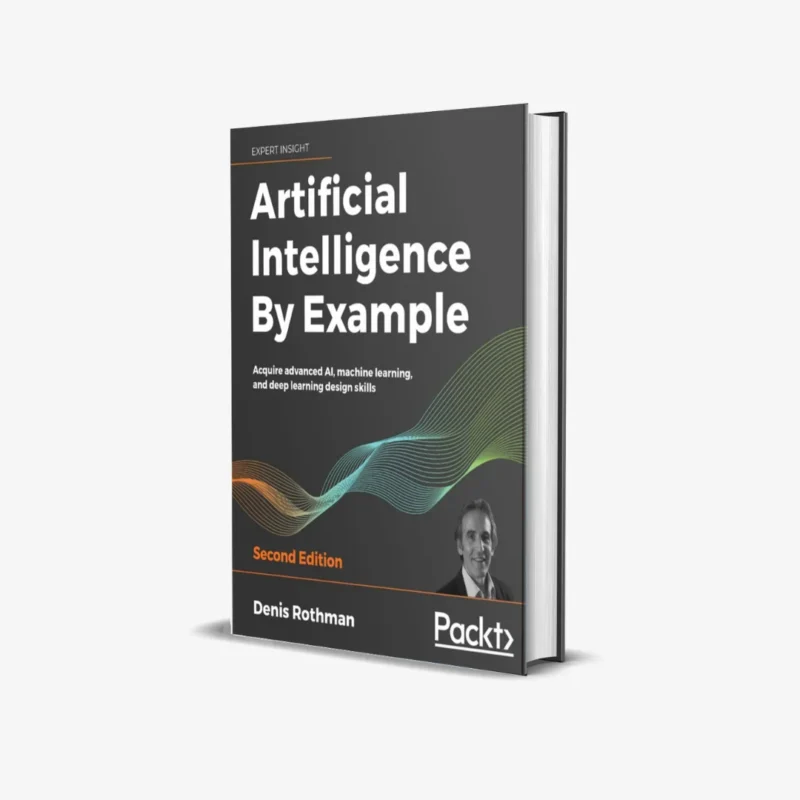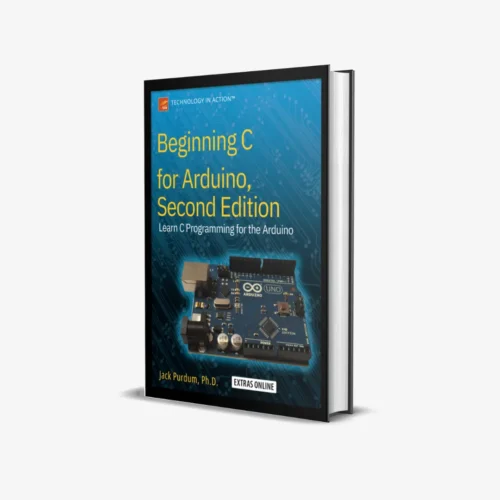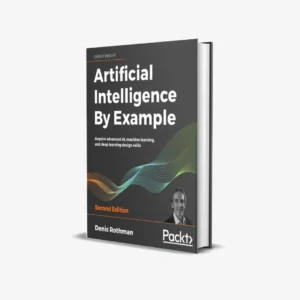Artificial Intelligence By Example – Second Edition 2nd ed. Edition
Understand the fundamentals and develop your own AI solutions in this updated edition packed with many new examples.
Key Features
- AI-based examples to guide you in designing and implementing machine intelligence
- Build machine intelligence from scratch using artificial intelligence examples.
- Develop machine intelligence from scratch using real artificial intelligence.
Book Description
AI has the potential to replicate humans in every field. Artificial Intelligence By Example, Second Edition serves as a starting point for you to understand how AI is built, with the help of intriguing and exciting examples.
This book will make you an adaptive thinker and help you apply concepts to real-world scenarios. Using some of the most captivating AI examples, right from computer programs such as a simple chess engine to cognitive chatbots, you will learn how to tackle the machine you are competing with. You will study some of the most advanced machine learning models, understand how to apply AI to blockchain and the Internet of Things (IoT), and develop emotional quotient in chatbots using neural networks such as recurrent neural networks (RNNs) and convolutional neural networks (CNNs).
This edition also has new examples for hybrid neural networks, combining reinforcement learning (RL) and deep learning (DL), chained algorithms, combining unsupervised learning with decision trees, random forests, combining DL and genetic algorithms, conversational user interfaces (CUI) for chatbots, neuromorphic computing, and quantum computing.
By the end of this book, you will understand the fundamentals of AI and have worked through a number of examples that will help you develop your AI solutions.
What you will learn
- Apply k-nearest neighbors (KNN) to language translations and explore the opportunities in Google Translate.
- Understand chained algorithms combining unsupervised learning with decision trees.
- Solve the XOR problem with feedforward neural networks (FNN) and build its architecture to represent a data flow graph.
- Learn about meta-learning models with hybrid neural networks.
- Create a chatbot and optimize its emotional intelligence deficiencies with tools such as Small Talk and data logging.
- Building conversational user interfaces (CUI) for chatbots
- Writing genetic algorithms that optimize deep learning neural networks
- Build quantum computing circuits
Who this book is for
Developers and those interested in AI who want to understand the fundamentals of artificial intelligence and implement them practically. Python programming and statistical knowledge are required to fully enjoy this book.
Table of Contents
- Getting Started with Next-Generation Artificial Intelligence through Reinforcement Learning
- Building a Reward Matrix Designing Your Datasets
- Machine Intelligence Evaluation Functions and Numerical Convergence
- Optimizing your solutions with K-means clustering
- How to Use Decision Trees to Enhance K-Means Clustering
- Innovating AI with Google Translate
- Optimizing Blockchains with Naive Bayes
- Solving the XOR Problem with an FNN
- Abstract Image Classification with CNN
- Conceptual Representation Learning
- Combining RL and DL
- AI and the IoT
- Visualizing Networks with TensorFlow 2.x and TensorBoard
- Preparing the Input of Chatbots with RBMs and PCA
- Setting Up a Cognitive NLP UI/CUI Chatbot
- Improving the Emotional Intelligence Deficiencies of Chatbots
- Genetic algorithms in hybrid neural networks
- Neuromorphic Computing
- Quantum Computing
About the Author
Denis Rothman graduated from Sorbonne University and Paris-Diderot University, writing one of the very first Word2Matrix embedding solutions. Denis Rothman is the author of three cutting-edge AI solutions: one of the first AI cognitive chatbots more than 30 years ago; a profit-oriented AI resource-optimizing system; and an AI APS (Advanced Planning and Scheduling) solution based on cognitive patterns that is now used worldwide in aerospace, rail, energy, apparel, and many other fields. Designed initially as a cognitive bot for IBM, it then went on to become a robust APS solution used to this day.










Reviews
There are no reviews yet.